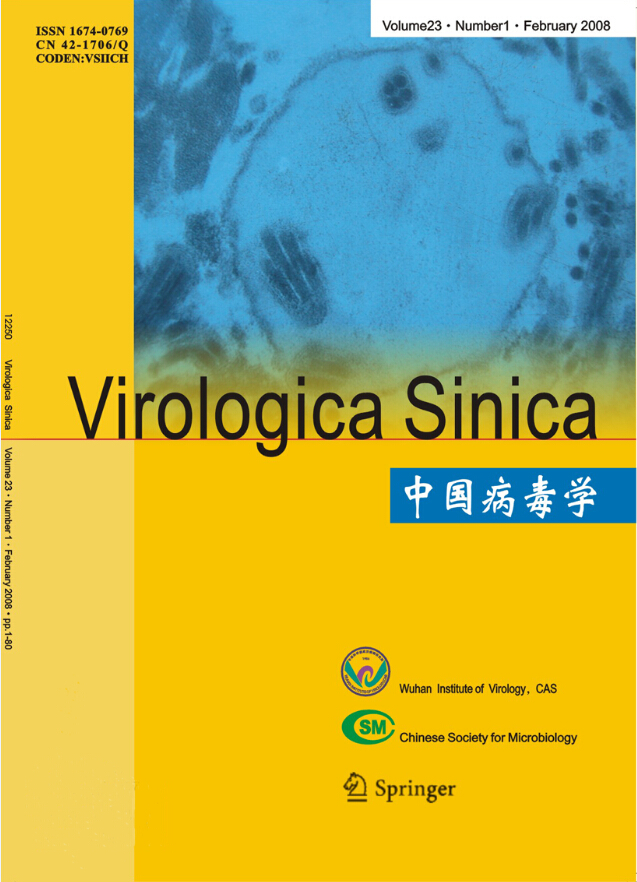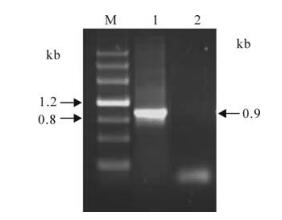-
Attoui H, Fang Q, Jaafar F M, et al. 2002. Common evolutionary origin of aquareoviruses and orthoreoviruses revealed by genome characterization of Golden shiner reovirus, Grass carp reovirus, Striped bass reovirus and golden ide reovirus (genus Aquareovirus, family Reoviridae). J Gen Virol, 83: 941-1951.
-
Chandran K, Walker S B, Chen Y, et al. 1999. In vitro recoating of reovirus cores with baculovirus-expressed outer-capsid proteins μ1 and sigma3. J Virol, 73 (5): 3941-3950.
-
Dryden K A, Wang G J, Yeager M, et al. 1993. Early steps in reovirus infection are associated with dramatic changes in supramolecular structure and protein conformations. J Cell Biol, 122(5): 1023-1041.
doi: 10.1083/jcb.122.5.1023
-
Estes M K. 2001. Rotaviruses and their replication. In: Fields Virology (Knipe D M, Howley P M, Griffin D E, et al ed. ), 4 ed. Philadelphia: Lippincott Williams & Wilkins, Vol. 2, p1625-1655.
-
Fang Q, Attoui H, Biagini P, et al. 2000. Sequence of genome segments 1, 2, and 3 of the grass carp reovirus (Genus Aquareovirus, family Reoviridae). Bioch Bioph Res Commun, 274 (3): 762-766.
doi: 10.1006/bbrc.2000.3215
-
Fang Q, Ke L H, Cai Y Q. 1989. Growth characterization and high titre culture of GCHV. Virologica Sinica, 3: 314-319. (in Chinese).
-
Fang Q, Shah S, Liang Y, et al. 2005. 3D Reconstruction and Capsid Protein Characterization of Grass Carp Reovirus. Science in China Series C, 48: 593-600.
doi: 10.1360/062004-105
-
Ivanovic T, Agosto M A, Nibert M L. 2007. A role for molecular chaperone Hsc70 in reovirus outer capsid disassembly. J Biol Chem, 282 (16): 12210-12219.
doi: 10.1074/jbc.M610258200
-
Ke L H, Fang Q, Cai Y Q. 1990. Characteristics of a novel isolate of grass carp Hemorrhage Virus. Acta Hydrobiol Sinica, 14: 153-159. (in Chinese)
-
Kim J, Zhang X, Centonze V E, et al. 2002. The hydrophilic amino-terminal arm of reovirus core-shell protein λ1 is dispensable for particle assembly. J Virol, 76: 12211-12222.
doi: 10.1128/JVI.76.23.12211-12222.2002
-
Liemann S, Chandran K, Baker T S, et al. 2002. Structure of the reovirus membrane-penetration protein, μ1, in a complex with its protector protein, σ3. Cell, 108: 283-295.
doi: 10.1016/S0092-8674(02)00612-8
-
Lupiani B, Subramanian K, Samal S K. 1995. Aquareoviruses. Ann Rev Fish Dis, 5: 175-208.
doi: 10.1016/0959-8030(95)00006-2
-
Mertens P P C, Arella M, Attoui H, et al. 2000. Family Reoviridae. In: Virus Taxonomy (van Regenmortel M H V, Fauguet C M, Bishop D H L, et al. ed. ), San Diego: Academic Press, CA, USA. p 395-480.
-
Nason E L, Samal S K, Venkataram Prasad B V. 2000. Trypsin-induced structural transformation in aquareovirus. J Virol, 74(14), 6546-6555.
-
Nibert M L, Schiff L A. 2001. Reoviruses and their replication. 4 ed. In: Fields Virology (Knipe D M, Howley P M, Griffin D E, et al. ed. ), Philadelphia: Lippincott Williams & Wilkins, Vol. 2, p1679-1728.
-
Rangel A A, Samal S K. 1999. Identification of grass carp hemorrhage virus as a new genogroup of aquareovirus. J Gen Virol, 80: 2399-2402.
doi: 10.1099/0022-1317-80-9-2399
-
Reinisch K M, Nibert M L, Harrison S C. 2000. Structure of the reovirus core at 3.6 angstrom resolution. Nature, 404 (6781): 960-967.
doi: 10.1038/35010041
-
Shaw A L, Samal S, Subramanian K, et al. 1996. The structure of aquareovirus shows how different geometries of the two layers of the capsid are reconciled to provide symmetrical interactions and stabilization. Structure, 15: 957-968.
-
van Regenmortel M H V, Fauquet C M, Bishop D H L, et al. 2000. Virus Taxonomy -Seventh Report of the International Committee on Taxonomy of Viruses. San Diego: Academic Press, California, USA.
-
Zhang L, Chandran K, Nibert M L, et al. 2006. Reovirus μ1 structural rearrangements that mediate membrane penetration. J Virol, 80 (24): 12367-12376.
doi: 10.1128/JVI.01343-06












